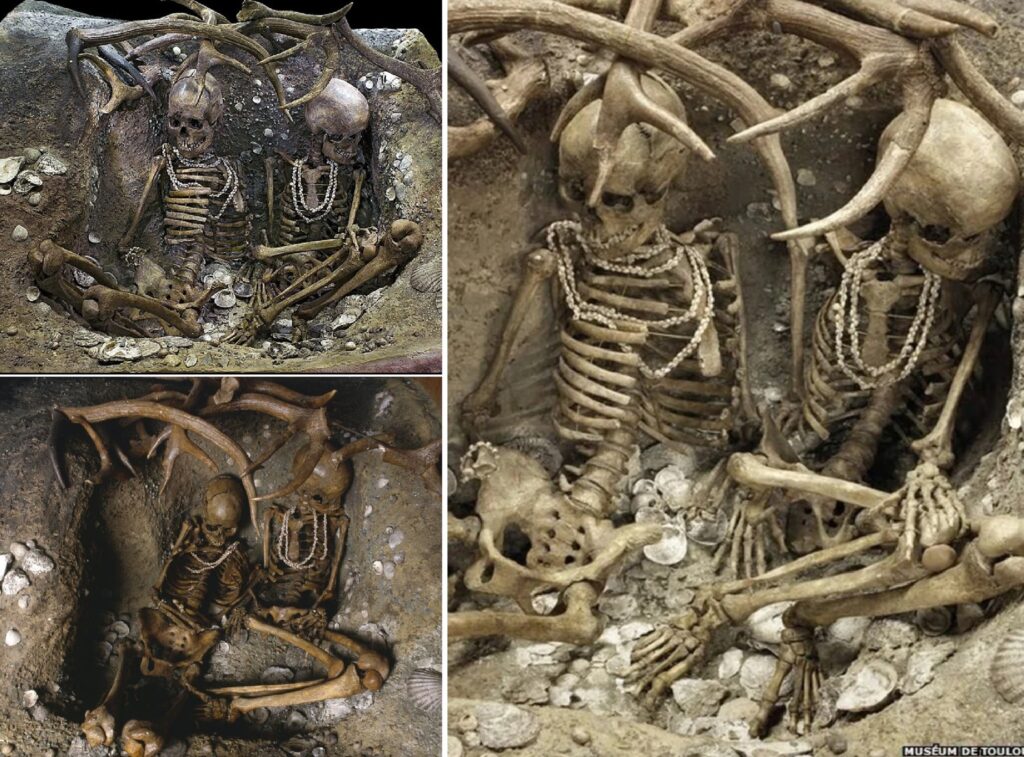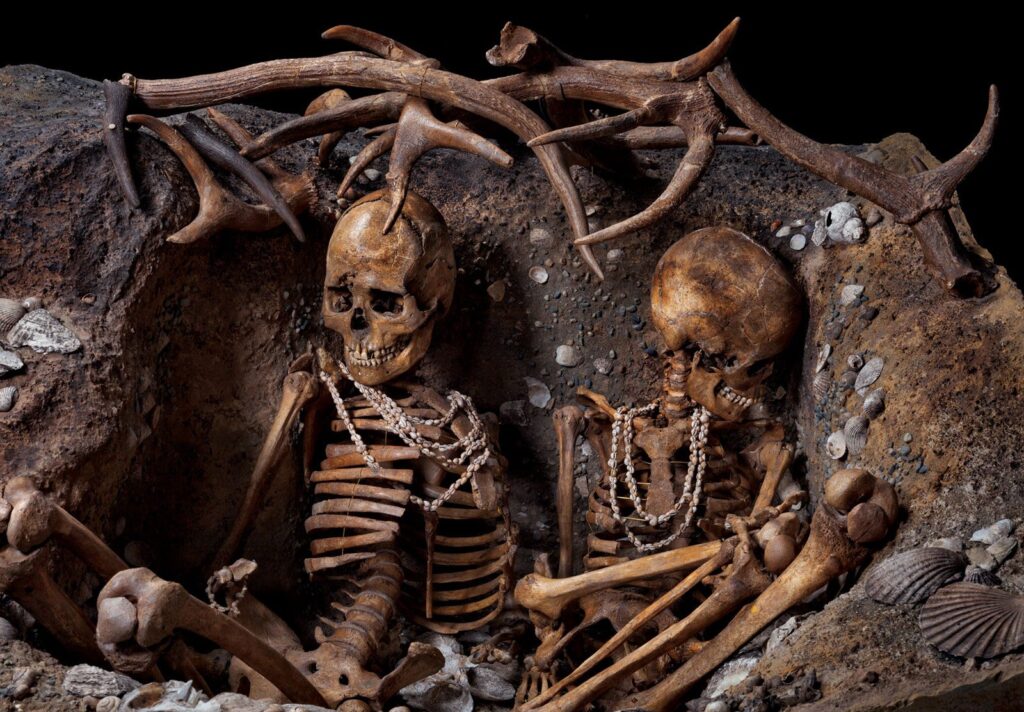The Tomb of Téviec is a remarkable archaeological discovery that sheds light on the cultural, social, and violent aspects of Mesolithic life in what is now Brittany, France. Unearthed in 1938 and later restored in 2010, the burial offers a rare glimpse into the practices and challenges faced by prehistoric communities.
Discovery and Location
The burial site was found on the small island of Téviec (or Théviec), located off the coast of Saint-Pierre-Quiberon in Brittany, France. The tomb dates back approximately 6,740 to 5,680 years before present (BP), during the Mesolithic period—a time of significant transition when hunter-gatherer societies began to adopt more sedentary lifestyles.
The Buried Individuals
The tomb contains the skeletons of two women, estimated to have been between 25 and 35 years old at the time of their deaths. Analysis of their remains indicates a violent end; they suffered multiple head injuries and wounds consistent with arrow impacts. The cause of such violence remains a subject of speculation—ranging from interpersonal conflict to territorial disputes or even ritual killings.
Violence in Mesolithic Societies
The evidence of violence found in the Tomb of Téviec highlights the precarious nature of life during the Mesolithic. As communities settled in specific areas, competition for resources like food, water, and territory may have intensified. This burial, therefore, provides valuable insights into the social dynamics and conflicts of the era.

Burial Practices and Rituals
Despite the violent nature of their deaths, the two women were buried with great care. Their bodies were placed in a pit, half carved into the bedrock and half embedded in kitchen debris, possibly signifying their connection to the domestic or communal sphere.
The burial was protected by a covering of antlers, which may have held ritual significance, serving as both a protective barrier and a symbolic gesture. Such practices suggest that the women were valued members of their community, with their burial reflecting respect or reverence.
Grave Goods and Artifacts
The tomb contained a variety of grave goods, offering insights into Mesolithic artistry and daily life:
- Flint and Bone Objects: These include tools or offerings, primarily made from wild boar remains, demonstrating the community’s reliance on hunting.
- Funeral Jewelry: Elaborate necklaces, bracelets, and ankle rings made from drilled marine shells adorned the bodies. The craftsmanship reflects a sophisticated understanding of materials and aesthetics.
- Engraved Artifacts: Some bone objects feature engraved lines, which may have had symbolic or decorative purposes, hinting at the creative and cultural expressions of the time.
The Symbolism of Marine Shells
The use of marine shells in the jewelry points to a deep connection with the coastal environment. These items may have served as status symbols, spiritual talismans, or markers of identity within the community.

Significance of the Tomb
The careful burial practices, combined with the presence of grave goods and protective elements, underscore the complexity of Mesolithic societies. The juxtaposition of violence in life and care in death reveals a duality in human existence—struggles for survival alongside expressions of respect and remembrance.
The Role of Women
The inclusion of high-quality grave goods and protective measures suggests that these women held significant roles within their society, whether as leaders, healers, or individuals of symbolic importance. Their burial reflects a social structure where individuals could achieve status and recognition.
Modern Study and Restoration
After its discovery in 1938, the tomb was carefully excavated and studied. A major restoration in 2010 ensured its preservation, allowing researchers to continue examining the artifacts and skeletal remains with advanced techniques. This ongoing study contributes to our understanding of Mesolithic life and death.
Conclusion
The Tomb of Téviec is more than a burial site; it is a window into the complexities of Mesolithic culture, revealing the interplay between violence, artistry, and ritual. It challenges us to consider the social dynamics of early communities and the ways they navigated the challenges of their world. Through careful analysis and preservation, the site continues to provide valuable lessons about humanity’s distant past.
